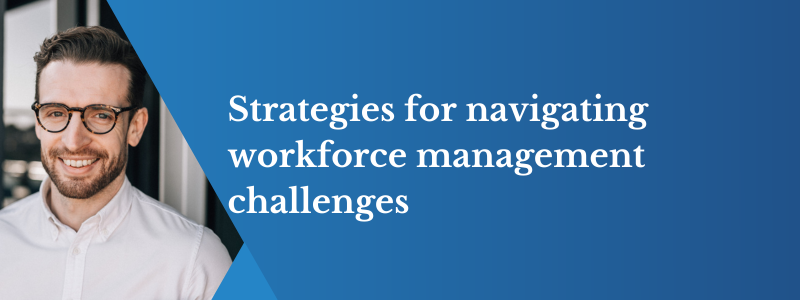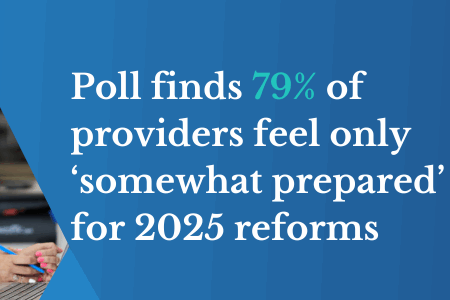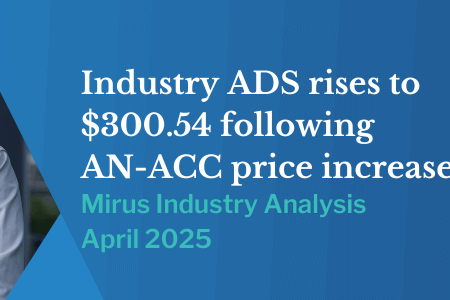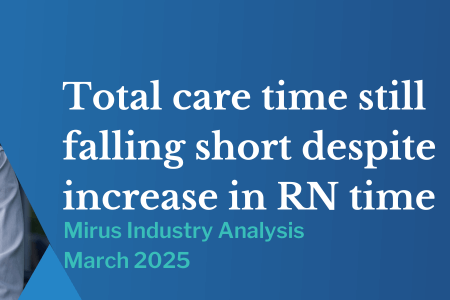6 effective strategies for aged care workforce management
May 8, 2024 | Data

By Tom Murphy, General Manager of Product and Operations
The workforce environment in aged care is a dynamic interplay of compassionate caregiving, complex medical needs, and regulatory compliance. Staff members navigate emotionally demanding situations while striving to uphold the highest standards, often within the constraints of limited resources and staffing challenges. From ensuring adequate staffing levels to optimising scheduling and enhancing performance, here we delve into the best practices and innovative strategies for aged care workforce management.
1. Staffing optimisation:
The first step in effective workforce management is ensuring that the facility is adequately staffed to meet the needs of residents. This involves not only recruiting and retaining qualified personnel but also strategically allocating staff based on demand and compliance with care minutes. By leveraging data-driven insights, facilities can proactively adjust staffing levels to maintain optimal care standards while controlling labour costs, thus addressing workforce shortages. This has been estimated by the Committee for Economic Development of Australia (CEDA) to be a worker shortfall of 110,000 by 2030.
To achieve this, facilities can implement predictive analytics to forecast staffing requirements, considering factors such as resident acuity levels (including impact on care minute targets), seasonal variations, and staff availability.
2. Scheduling efficiency:
Scheduling plays a pivotal role in workforce management, influencing staff morale, productivity, and resident satisfaction. Traditional scheduling methods often fall short in accommodating the preferences and availability of staff, leading to inefficiencies and dissatisfaction. Aged care facilities can adopt flexible scheduling solutions like Mirus Works that empower employees to choose shifts based on their preferences and personal commitments. These cloud-based scheduling platforms enable real-time adjustments and facilitate seamless communication among staff members, thus ensuring a well-balanced roster that improves staff engagement and meets care needs efficiently.
3. Performance optimisation:
Performance optimisation goes beyond ensuring that tasks are completed efficiently; it encompasses fostering a culture of continuous improvement and empowerment among staff members. Aged care facilities can implement performance management systems that provide regular feedback, recognise achievements, and identify areas for development. Additionally, investing in ongoing training and professional development opportunities enables staff to enhance their skills and stay abreast of industry best practices.
Just as retention is important, so too is development of staff. By nurturing a supportive and growth-oriented work environment, facilities can boost staff engagement, retention, and ultimately, the quality of care provided to residents.
4. Embracing technology:
Now, more than ever, providers are considering upgrading their HCM systems with data and interoperability in mind. When implemented well, technology serves as a driver for innovation in aged care workforce management, offering solutions to streamline processes and enhance operational efficiency. From automated scheduling software to electronic health records and telehealth platforms, technology solutions are readily available to simplify administrative tasks, improve communication, and facilitate remote monitoring. Embracing digital tools not only reduces manual workloads but also enhances accuracy, transparency, and compliance with regulatory requirements.
A notable study by Nucleus Research analysing multiple workforce management deployments found that every dollar invested in such systems could yield substantial benefits. The analysis highlighted that organisations could see a return on investment of more than 12% within as little as five months, primarily due to increased operational efficiency. This demonstrates the significant impact that technology can have on optimising daily operations and reducing overhead costs in aged care facilities.
By integrating these advanced technologies, facilities can leverage time savings and financial benefits, ensuring that resources are utilised effectively.
5. Collaboration and communication:
Effective workforce management hinges on collaboration and communication among multidisciplinary teams, spanning from frontline caregivers to administrative staff and healthcare professionals. Aged care facilities can leverage communication platforms and collaboration tools to facilitate information sharing, care coordination, and interdisciplinary collaboration. Regular team meetings, huddles, and debriefings provide opportunities for staff to share insights, address challenges, and align on care priorities. By promoting open communication and mutual respect, facilities can enhance teamwork, minimise errors, and promote a person-centred approach to care delivery.
6. Prioritising staff well-being
Perhaps most importantly, effective workforce management prioritises the well-being and resilience of staff members. Working in aged care can be emotionally and physically demanding, leading to burnout and turnover if not adequately addressed. Facilities can implement wellness programs, employee assistance services, and mental health resources to support staff members in managing stress and maintaining work-life balance.
According to the Black Dog Institute, mental health and well-being among aged care workers is a major public health issue, which has been exacerbated by the impacts of COVID-19. This underscores the critical need for robust support systems within aged care facilities to address mental health concerns proactively. Implementing appreciation and recognition strategies, where staff contributions are valued and celebrated, creates a sense of belonging and loyalty among employees, thus enhancing employee engagement through recognition and trust.
Implementing comprehensive mental health and well-being programs not only supports the individual health of caregivers but also contributes significantly to the overall quality of care they are able to provide to residents.
Effective workforce management in aged care is vital, involving strategic staffing optimisation, enhanced scheduling with flexible technology solutions. In a sector where every hour and dollar needs to be used effectively, embracing technological advancements streamlines operations and boosts efficiency. Collaboration enhances team coordination, while prioritising staff well-being supports a healthy, engaged workforce. Together, these strategies ensure high-quality care and operational excellence.
For help with your workforce strategy and to hear how Mirus Works can support this, get in touch.


